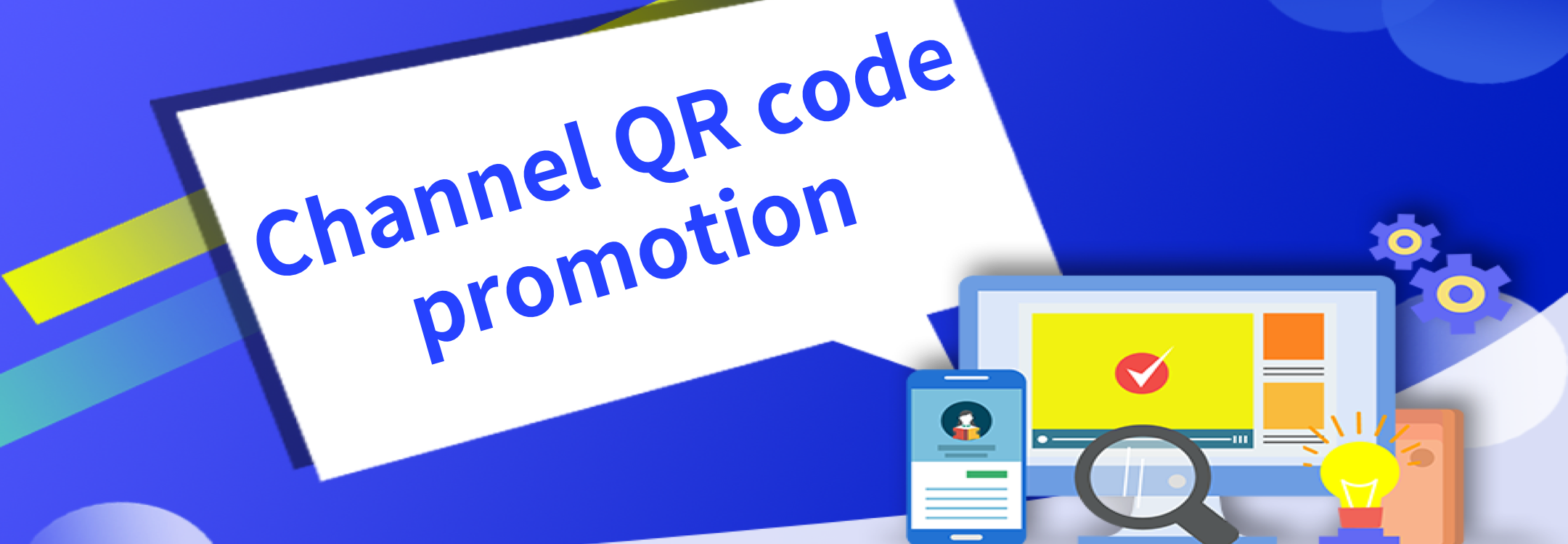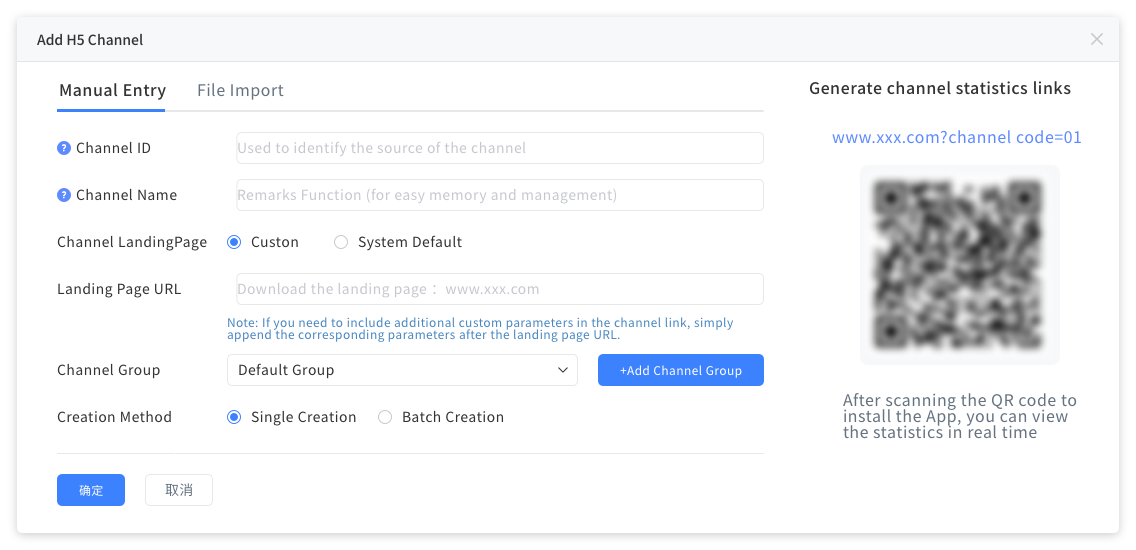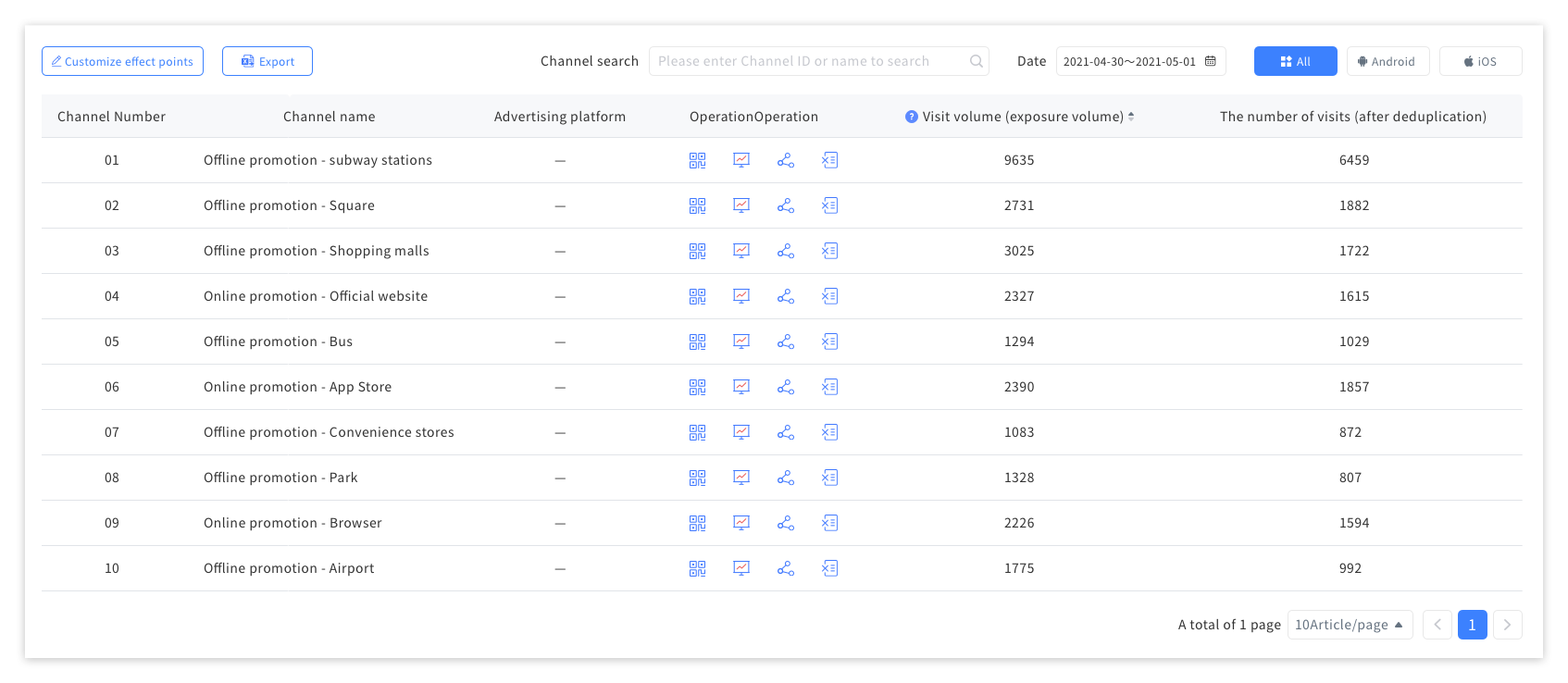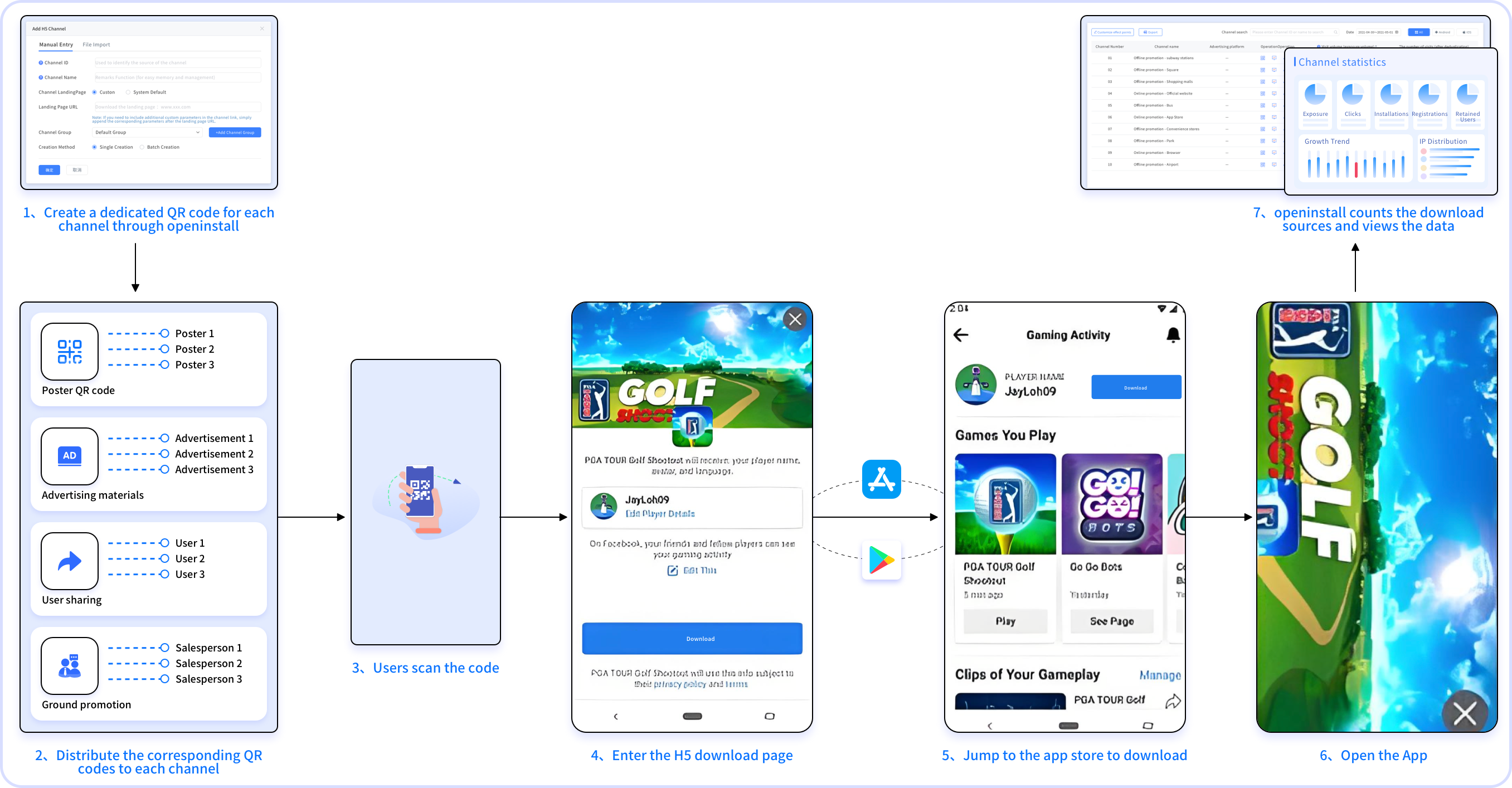
App channel QR code promotion and usage scenarios
- 2025.5.22 15:45
- openinstall
- Product Dynamics
Requirement: Monitor the new download sources of QR codes
When promoting an App with a QR code, how can one determine if the volume is brought about through a certain channel scenario?
How to solve the cumbersome process of filling in codes and manual registration, and avoid the repetitive packaging of Android and the restrictions of iOS when statistically analyzing the promotion data of QR codes?
How to assess the promotion performance of each salesperson when using QR codes to attract new customers in offline promotion?
As long as your App is a business that frequently uses QR codes for operation or promotion, it will inevitably put forward the above several demands, and the essence of these demands is actually all focused on monitoring the download sources of new users. This article will elaborate on the solutions and more application scenarios of QR codes.
To conduct source monitoring for multiple QR codes in App promotion, let’s first take a look at the QR code promotion process:
Distribute A QR code to promotion channel A – > Users scan the QR code of promotion Channel A – > Enter the H5 download page – > Click the download App button – > Enter the App store to download the App – > Open the App (at this point, it is wanted to know that this user was brought by A).

During this process, there are numerous and diverse channels responsible for promotion. There are three key nodes that are the focus of the QR code monitoring chain:
1. Promotion channels: These can be poster QR codes, advertising materials, user sharing, offline promotion, etc. Each form is further divided into multiple channels. For instance, if 1,000 promotion personnel promote an App, a unique monitoring QR code needs to be generated for each individual.
2. Qr Code: Essentially, it is a web link. Channel information and parameters need to be marked on the link.
3. App: After the user downloads and activates it, the monitoring data needs to be fed back.
After understanding the work of these nodes, flexibly applying the App channel source tracking technology can effectively solve the monitoring problems in the promotion of App QR codes.
Solution: Tracking the source of the QR code channel
Here is a brief explanation of the usage process of the openinstall channel source tracking technology:
Integrate the openinstall web SDK on the H5 download page required for App promotion, and integrate the openinstall Android/iOS SDK respectively on the promoted App.
2. Enter the “Channel Management” page in the background and simply complete three steps to create a channel link/QR code:
Fill in the “Channel Number” (a parameter for identifying the source of the channel, and channelCode= Channel Number will be generated on the link later)
Fill in the “Channel Name” (no special meaning, note function)
Fill in the “Download Landing Page” (the H5 promotion page used for App promotion)

3. Just place the generated QR code in the corresponding channel. When a certain terminal accesses the H5 download page through this QR code, openinstall starts to count the visit volume. When the App is officially downloaded and opened later, data such as installation volume and registration volume will also be statistically recorded in the corresponding report. View data in real time in the “Channel Report”.

Based on this method, let’s briefly review the promotion process of QR codes with monitoring capabilities:
Create a unique QR code for each promotion channel – > Distribute it to the corresponding channel – > Users scan the promotion QR code – > Enter the H5 download page – > Click the download App button – > Enter the App store to download the App – > Open the App (at this point, the download source attribution of each user is counted).

This method solves several problems raised at the beginning of this article. Its advantages over traditional promotion lie in:
During the development stage, Android does not require individual channel packages, and iOS has also solved the problem of being unable to subcontract.
Promotion stage: Normal scanning and downloading are sufficient. There is no need for individual users to fill in codes or for salespeople to register manually to achieve statistical purposes.
Distribution stage: It can create channels in batches and quickly generate promotion QR codes carrying statistical parameters for a large number of channels.
Assessment stage: It can trace the number of new users brought by each QR code channel and serve as the settlement basis for performance attribution.
Customizable parameters: The channelCode field parameter in the link cannot be modified, but you can add custom parameters on the link yourself, separated by &, to collect more information.
Value: The potential of channel QR codes is huge
Qr codes have long been a powerful tool to break through the boundaries of the Internet, but the value of channel QR codes in App promotion and marketing is far from being fully explored. For users, the “scanning code” operation is a convenient and fast login entry, especially in offline scenarios. For App operators, QR codes have a high acceptance rate and are convenient to share, making it easy to find promotion scenarios in combination with their own business.
Here are some examples of various industries skillfully using channel QR codes to promote their apps:
- A certain chain convenience store brand distributes its own exclusive channel QR code in each store. Customers can scan the code to download it without manually filling in the store code. They can bind the performance of the store to which the QR code belongs and quickly enjoy the order discount.
- A certain insurance industry App distributes a unique channel QR code to each customer manager. Customers can scan the code to download and bind the QR code to the customer manager without manually filling in the employee number, reducing operational costs.
- A certain mobile game promotion adopts a CPS settlement model, distributing exclusive channel QR codes to each channel. The channels use the QR codes to drive traffic. The consumption generated by players after downloading the App will be statistically attributed. Finally, the platform and the channels share the profits.
When using channel QR codes, it is essential to analyze the channel scenarios in combination with the characteristics of your own products. Make good use of divergent thinking and find the right entry point, which can bring unexpected promotion effects to the App.
Recent Posts
- OpenInstall Omnichannel Multi-scenario Solution
- Having trouble acquiring users and achieving conversions for your app? Here are solutions based on real-world examples.
- openinstall: A solution for attribution and redirection from web to app (W2A).
- How to efficiently use app data statistics
- In today’s wave of social networks, how should developers make good use of omni-channel statistics?
- ASA Attribution Statistics: Breaking Through the Gap in iOS Customer Acquisition Data from a Developer’s Perspective, Making Advertising Decisions More Traceable
- Openinstall Core Function Usage Guid
- What benefits can a Web to App attribution solution bring?
- IMore than just “data calculation”: The underlying logic of APP channel agent statistics is the key to doubling conversion efficiency
- How to Use App Install Parameters for Channel Attribution



